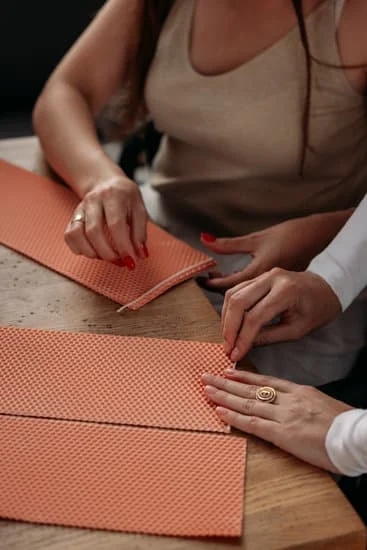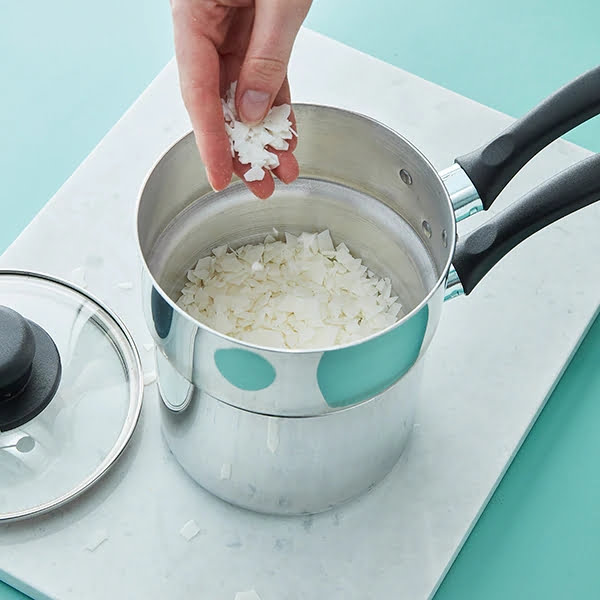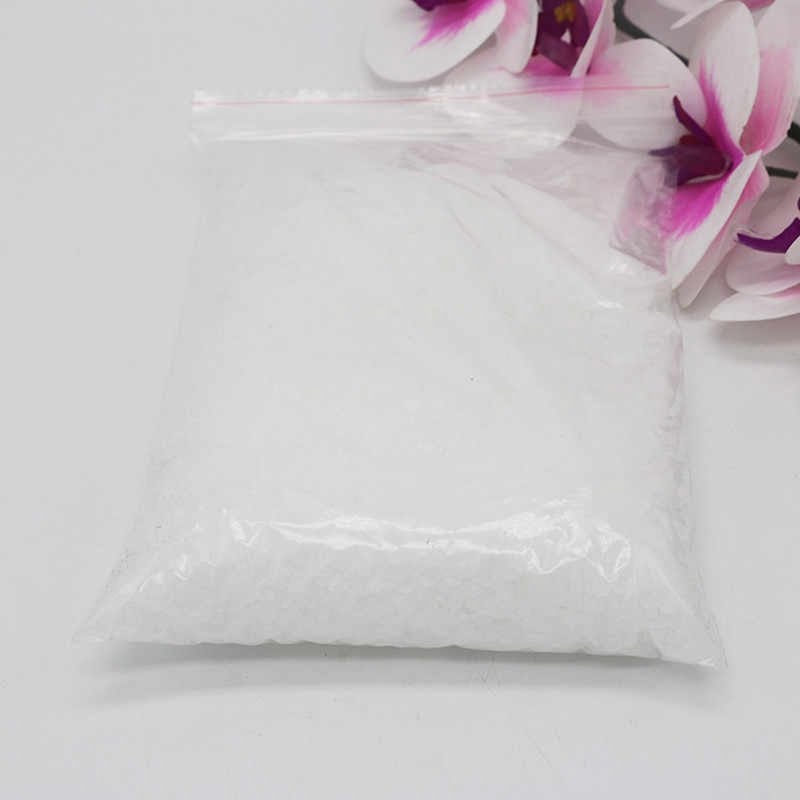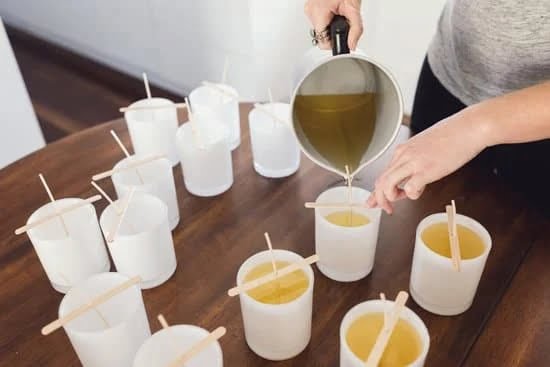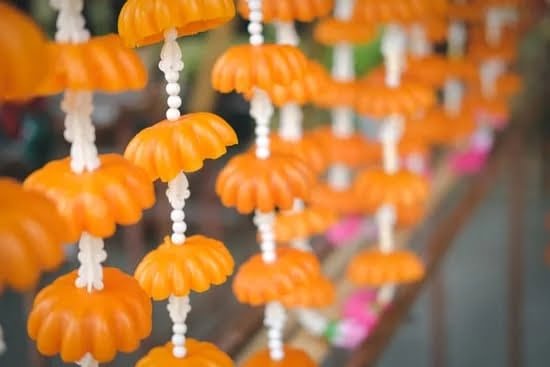Have you ever wanted to create your own unique fragrance for candles? In this article, we will explore the art of making your own fragrance for candles, allowing you to customize and personalize your candle experience. Whether you are looking to relax with a soothing lavender scent or invigorate your space with a refreshing citrus aroma, making your own candle fragrance gives you the creative freedom to craft scents that resonate with you.
When it comes to making your own fragrance for candles, there are numerous benefits to opting for a do-it-yourself approach. Not only do you have control over the ingredients and quality of the scent, but you also have the ability to tailor the fragrance to suit your preferences. By choosing specific base notes, middle notes, and top notes, you can create a candle fragrance that is truly one-of-a-kind and reflective of your personal style.
Whether you prefer essential oils or fragrance oils, understanding the difference between the two is crucial when creating custom fragrances for candles. Essential oils offer natural aromas extracted from plants, while fragrance oils provide synthetic scents designed to mimic various fragrances. By knowing the distinction between these options, you can make informed decisions when selecting ingredients for your homemade candle scents.
Benefits of Making Your Own Fragrance for Candles
One of the primary benefits of making your own fragrance for candles is the ability to customize scents according to your preferences. When you create your own candle fragrance, you have the freedom to choose the specific combination of base notes, middle notes, and top notes that resonate with you. This level of personalization ensures that the candles you make not only smell amazing but also reflect your unique style and taste.
Another advantage of DIY candle making is the opportunity to use natural ingredients such as essential oils. Unlike fragrance oils that may contain synthetic chemicals, essential oils are derived from plants and offer a more natural and subtle aroma. By utilizing essential oils in your candle-making process, you can create a healthier and environmentally friendly product that enhances your overall well-being.
Additionally, making your own fragrance for candles can be a cost-effective alternative to purchasing store-bought candles with generic scents. While high-quality fragrance oils and essential oils may require an initial investment, they often last for numerous candle-making projects. By buying these ingredients in bulk and experimenting with different scent combinations, you can ultimately save money while indulging in a creative and rewarding hobby.
| Benefits of Making Your Own Fragrance for Candles | Why DIY Is the Way to Go |
|---|---|
| Customization of scents according to preferences | Reflects unique style and taste |
| Opportunity to use natural ingredients such as essential oils | Healthier and environmentally friendly product |
| Cost-effective alternative to purchasing store-bought candles | Saves money in the long run by buying ingredients in bulk |
Essential Oils vs Fragrance Oils
When it comes to making your own fragrance for candles, one of the key decisions you’ll have to make is whether to use essential oils or fragrance oils. Understanding the difference between these two types of oils is crucial in creating the perfect scents for your candles.
Essential oils are natural oils extracted from plants through methods like distillation or cold pressing. They offer a range of therapeutic benefits and come in a variety of aromas, making them great choices for those looking for a more natural option when creating candle fragrances.
On the other hand, fragrance oils are synthetic or artificially created scents that mimic specific aromas. While fragrance oils may not have the same therapeutic benefits as essential oils, they provide an extensive range of fragrances to choose from, allowing for endless possibilities in scent creation.
To help you decide whether to use essential oils or fragrance oils when making your own candle fragrances, here are some key points to consider:
- Essential oils are all-natural and can offer aromatherapy benefits
- Fragrance oils come in a wide range of scents and are often more affordable
- Essential oils may have a lighter scent throw compared to fragrance oils
- Fragrance oils may have a stronger and longer-lasting scent throw
Overall, both essential oils and fragrance oils have their advantages and drawbacks when it comes to making your own candle fragrances. Depending on your preferences, budget, and desired outcome, you can experiment with different combinations of both types of oils to create unique and personalized scents for your candles.
Choosing the Right Base Notes, Middle Notes, and Top Notes for Your Candle Fragrance
When it comes to creating your own fragrance for candles, understanding the different notes that make up a scent is essential. Each note plays a crucial role in the overall aroma of your candle, providing depth and complexity to the fragrance. By carefully selecting base notes, middle notes, and top notes, you can create a well-balanced and harmonious scent that will enhance your candle-making experience.
To help you choose the right notes for your candle fragrance, here is a breakdown of what each category represents:
- Base Notes: Base notes are the foundation of your candle fragrance and provide depth and longevity to the scent. Common base notes include vanilla, sandalwood, patchouli, and musk.
- Middle Notes: Middle notes act as the heart of the fragrance, providing balance between the base and top notes. Popular middle notes include lavender, rosemary, jasmine, and cinnamon.
- Top Notes: Top notes are the first impression of your candle scent and evaporate quickly. These notes are usually light and fresh, such as citrus fruits like lemon or orange, peppermint, or eucalyptus.
By combining these different types of notes in varying ratios, you can create a unique and personalized fragrance for your candles. Experimenting with different combinations will allow you to discover new scents that reflect your preferences and style. Remember that finding the right balance between base, middle, and top notes is key to making a successful candle fragrance that will delight your senses.
Incorporating a variety of base, middle, and top notes into your homemade candle fragrances can open up a world of possibilities for creating truly one-of-a-kind scents. Whether you prefer floral aromas with a hint of spice or fresh citrusy scents with earthy undertones, experimenting with different combinations will help you find the perfect blend for your candles.
Don’t be afraid to get creative and think outside the box when it comes to making your own fragrance for candles – after all it’s all about expressing your individuality through scent.
Tools and Supplies Needed for Creating Your Own Candle Fragrance
When it comes to making your own fragrance for candles, having the right tools and supplies is essential to ensure a successful and enjoyable experience. Here are some of the key items you will need to create your custom candle scents:
1. Essential Oils or Fragrance Oils: The foundation of any candle fragrance blend is the oils used. Essential oils are natural plant extracts that offer a pure and authentic scent, while fragrance oils are manufactured scents designed specifically for candle making. Depending on your preference and budget, you can choose either essential oils or fragrance oils, or even a combination of both.
2. Carrier Oils: Carrier oils are used to dilute essential oils before they are added to candles. Common carrier oils include coconut oil, soybean oil, and almond oil. These oils help to disperse the fragrance evenly throughout the candle wax and ensure a consistent scent throw when the candle is burning.
3. Candle Wax: Selecting high-quality candle wax is crucial for achieving a clean burn and optimal scent throw in your candles. Whether you prefer soy wax, beeswax, paraffin wax, or a blend of different waxes, be sure to choose a type that is suitable for candle making and can hold a good amount of fragrance.
In addition to these key ingredients, you may also need containers for mixing and storing your fragrance blends, measuring spoons or cups for accurate portions, labels for identifying your creations, and other miscellaneous tools like droppers or pipettes for precise measurements.
| Tools and Supplies | Details |
|---|---|
| Essential Oils or Fragrance Oils | Select high-quality scents based on personal preferences. |
| Carrier Oils | Used to dilute essential oils; aids in even scent distribution. |
| Candle Wax | Choose appropriate wax type for clean burn and optimal scent throw. |
Step-by-Step Guide to Blending Your Own Fragrance for Candles
Gather Your Ingredients
Before you start blending your own fragrance for candles, you will need to gather your essential oils or fragrance oils. Make sure to choose high-quality oils that are safe for candle making and have good scent throw. You may also want to consider mixing different scents to create a unique blend for your candles.
Some popular base notes include vanilla, sandalwood, and patchouli, while common middle notes consist of lavender, rose, and jasmine. For top notes, options like citrus scents or peppermint can add a refreshing touch to your candle.
Measure Carefully
Once you have chosen the oils for your custom fragrance blend, it’s important to measure them carefully. Using a digital scale can help ensure accuracy in your measurements.
Remember that a little goes a long way with essential oils, so start by adding small amounts and gradually increase until you achieve the desired scent strength. Keep track of how much of each oil you use so you can replicate the blend if you decide to make more candles with the same fragrance in the future.
Blend and Test
After measuring out your chosen oils, it’s time to blend them together in a glass container. Gently swirl the oils together without creating too many bubbles. Once blended, allow the mixture to sit for at least 24 hours so that the scents can meld properly.
After this resting period, test the fragrance by smelling it in its blended form and then burning a small amount of the blend on a heat-safe dish or wax melt burner. This step is crucial in determining if any adjustments need to be made before incorporating the fragrance into your candles.
Tips for Creating Unique and Memorable Candle Scents
When it comes to making your own fragrance for candles, the possibilities for creating unique and memorable scents are endless. By experimenting with different combinations of essential oils and fragrance oils, you can customize your candle creations to suit your preferences and mood. Here are some tips to help you elevate your candle-making experience:
Experiment With Different Essential Oil Combinations
One way to create unique candle scents is by exploring various essential oil blends. Essential oils come in a wide range of fragrances, from floral and citrusy to earthy and woodsy. By mixing different essential oils together, you can create complex and one-of-a-kind scents for your candles. For example, blending lavender with cedarwood and bergamot can result in a calming yet energizing aroma that is perfect for promoting relaxation.
Get Creative With Fragrance Oil Blends
In addition to essential oils, fragrance oils offer a vast array of scent options for candle making. While essential oils are derived from natural sources, fragrance oils are synthetic but can still provide lovely aromas. Consider combining different fragrance oils like vanilla bean, coffee, and pumpkin spice to create a warm and inviting scent reminiscent of a cozy coffee shop on a crisp autumn day.
Think Outside the Box
Don’t be afraid to think outside the box when creating unique candle scents. Consider incorporating unexpected elements like herbs, spices, or even fruit peels into your fragrance blends for an added twist. For example, adding rosemary and lemon zest to your candle mixture can create a fresh and invigorating scent that will uplift any space in your home.
By following these tips and thinking creatively, you can craft personalized fragrances that truly reflect your style and personality. Making your own fragrance for candles allows you to immerse yourself in the art of scent creation while enjoying the soothing ambiance that candles bring into any space.
Safety Precautions and Best Practices for Making Your Own Fragrance for Candles
When it comes to making your own fragrance for candles, safety should always be a top priority. Working with concentrated essential oils and fragrance oils can pose some risks if not handled properly. To ensure a safe and enjoyable candle-making experience, it is essential to follow some key safety precautions and best practices.
First and foremost, always work in a well-ventilated area when blending your candle fragrances. This will help to prevent any potential respiratory irritation or allergic reactions that may arise from inhaling strong scents for an extended period of time. Additionally, make sure to wear gloves and protective eyewear to avoid direct contact with undiluted oils, which can cause skin irritations.
Another important safety measure is to carefully label all of your oils and blends. This will help you keep track of the ingredients you are using and prevent any mix-ups that could lead to unwanted chemical reactions or unpleasant scents. Properly labeling your creations also allows you to recreate your favorite blends in the future with ease.
In addition to safety precautions, there are also some best practices to keep in mind when making your own fragrance for candles. It is recommended to start by creating small test batches before committing to larger quantities. This will allow you to fine-tune your blends and make adjustments as needed without wasting precious supplies.
Furthermore, always thoroughly clean and sanitize your equipment between uses to avoid cross-contamination of scents and ensure the purity of your fragrances. By following these safety measures and best practices, you can enjoy the process of creating custom candle scents while staying safe and organized throughout the entire DIY journey.
Conclusion
In conclusion, creating your own fragrance for candles can truly empower you to customize your candle experience in a way that is unique and personal. By delving into the art of scent blending, you have the opportunity to explore different combinations of base, middle, and top notes to craft a candle fragrance that reflects your individual taste and style.
Whether you prefer floral, woody, citrusy, or spicy scents, the possibilities are endless when you take on the challenge of making your own fragrance for candles.
Furthermore, the benefits of DIY candle making go beyond just personalizing your home decor. When you make your own fragrance for candles, you also have control over the quality of ingredients used. By choosing natural essential oils over synthetic fragrance oils, you can create candles that are free from harmful chemicals and toxins. This not only enhances the aroma of your candles but also promotes a healthier environment in your home.
So why not take the plunge into the world of custom candle fragrances? With the right tools, supplies, and knowledge at your disposal, there is no limit to what you can create. Experiment with different blends, follow safety precautions diligently, and let your creativity run wild as you embark on this aromatic journey of making your own fragrance for candles. Unleash your inner perfumer and elevate your candle game with scents that are truly one-of-a-kind.
Frequently Asked Questions
Can You Make Your Own Fragrances for Candles?
Making your own fragrances for candles is definitely possible and can be a fun and creative process. It involves combining different essential oils or fragrance oils to create unique scents that reflect your preferences or the mood you want to set in your space. It allows you to customize the candles exactly how you like them.
How Do You Make Homemade Candle Scents?
Homemade candle scents are typically created by mixing various essential oils or fragrance oils together in specific ratios to achieve the desired aroma. This can involve experimenting with different combinations and strengths of scents until you find the perfect blend for your candles.
Additionally, adding dried herbs or spices can also enhance the scent and give it a more complex profile.
What Is the Formula for Adding Fragrance to Candles?
The formula for adding fragrance to candles depends on various factors such as the type of wax being used, the desired strength of the scent, and personal preference. As a general guideline, around 6-10% fragrance oil is commonly used per pound of wax.
However, it’s crucial to follow specific guidelines provided by the manufacturer of both the fragrance oil and wax to ensure optimal results in terms of scent throw and candle performance.

Welcome to my candle making blog! In this blog, I will be sharing my tips and tricks for making candles. I will also be sharing some of my favorite recipes.

